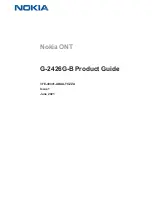
LANCOM L- 54ag Wireless – LANCOM L- 54g Wireless – LANCOM IAP- 54 Wireless
Chapter 5: Security settings
48
EN
the 'Security' tab. It is particularly advisable to assign a password to the
configuration if you want to allow remote configuration.
Have you permitted remote configuration?
If you do not require remote configuration, then deactivate it. If you
require remote configuration, then be sure to assign a password protec-
tion for the configuration (see previous section). The field for deactivating
the remote configuration is also contained in LANconfig in the 'Manage-
ment' configuration area on the 'Security' tab.
Have you permitted the configuration by the wireless network?
If you do not require configuration by the wireless network, then deacti-
vate it. The field for deactivating the configuration by the wireless network
is also contained in LANconfig in the 'Management' configuration area on
the 'Security' tab. Select here under 'Access rights - from Wireless LAN'
for all types of configuration the option 'not allowed'.
Have you assigned a password to the SNMP configuration?
Also protect the SNMP configuration with a password. The field for pro-
tection of the SNMP configuration with a password is also contained in
LANconfig in the 'Management' configuration area on the 'Security' tab.
Have you activated the Firewall?
The Stateful Inspection Firewall of the LANCOM ensures that your local
network cannot be attacked from the outside. The Firewall can be enabled
in LANconfig under ’Firewall/QoS’ on the register card ’General’.
Do you make use of a ’Deny All’ Firewall strategy?
For maximum security and control you prevent at first any data transfer
through the Firewall. Only those connections, which are explicitly desired
have to allowed by the a dedicated Firewall rule then. Thus ’Trojans’ and
certain E-mail viruses loose their communication way back. The Firewall
rules are summarized in LANconfig under ’Firewall/Qos’ on the register
card ’Rules’. A guidance can be found in the reference manual.
Have you activated the IP masquerading?
IP masquerading is the hiding place for all local computers for connection
to the Internet. Only the router module of the unit and its IP address are
visible on the Internet. The IP address can be fixed or assigned dynami-
cally by the provider. The computers in the LAN then use the router as a
gateway so that they themselves cannot be detected. The router separates
Internet and intranet, as if by a wall. The use of IP masquerading is set
individually for each route in the routing table. The routing table can be
















































